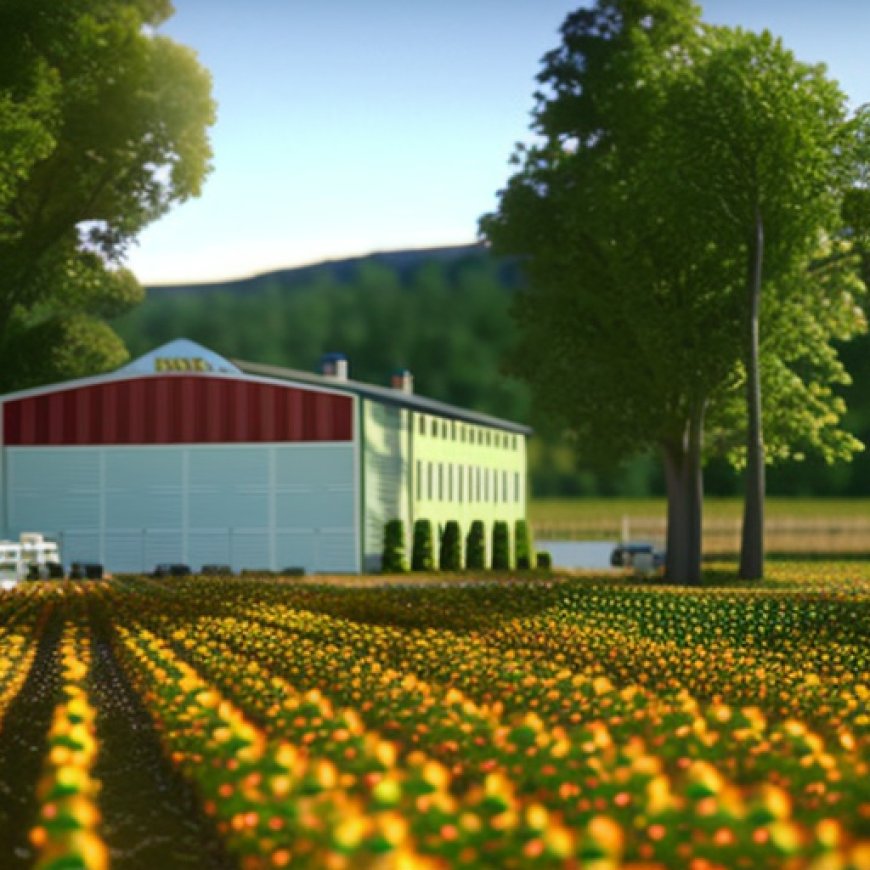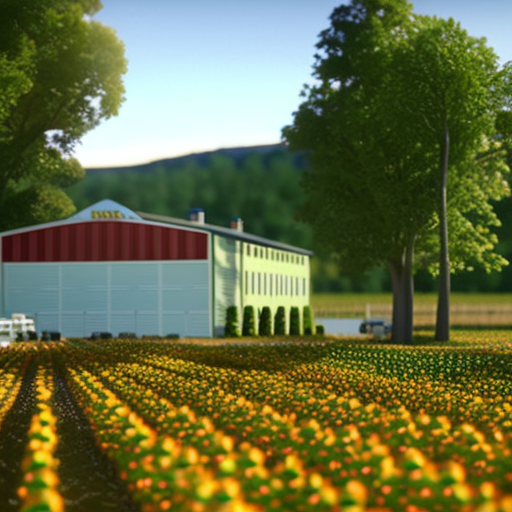Officials launch Mohawk Valley Farm and Agribusiness Network
Officials launch Mohawk Valley Farm and Agribusiness Network Rome Sentinel


Mohawk Valley Farm and Agribusiness Network

Introduction
The Mohawk Valley Economic Development District, Inc. has partnered with Visit Schoharie County and the Office for Agricultural Development of Schoharie County to launch a new initiative called the Mohawk Valley Farm and Agribusiness Network. This initiative aims to address the Sustainable Development Goals (SDGs) by promoting sustainable agriculture and economic development in the region.
Mission and Objectives
The MVFAN’s mission is to provide Mohawk Valley farms and agribusinesses with the industry resources necessary to create a robust, diverse, productive, and efficient agricultural landscape. By advocating for economic development efforts that focus on value-added business opportunities, MVFAN aims to create agriculture jobs and increase access to healthy foods for all residents.
The Importance of the Food System
The food system consists of various stakeholders, including farmers, processors, distributors, retailers, restaurants, emergency food programs, consumers, and supporting businesses and agencies. These groups form a network that has significant and interconnected impacts on the environment, economy, and individuals’ health.
Sustainable Development Goals (SDGs)
- SDG 2: Zero Hunger – MVFAN’s initiative contributes to SDG 2 by promoting agricultural practices that increase food production and improve access to healthy and nutritious food for all residents in the Mohawk Valley.
- SDG 8: Decent Work and Economic Growth – MVFAN’s advocacy for value-added business opportunities in the agricultural sector aims to create more agriculture jobs, contributing to SDG 8’s objective of promoting inclusive and sustainable economic growth.
- SDG 12: Responsible Consumption and Production – By supporting sustainable agriculture practices, MVFAN helps achieve SDG 12’s goal of promoting responsible consumption and production patterns that minimize waste and environmental impact.
- SDG 15: Life on Land – MVFAN’s efforts contribute to SDG 15 by promoting sustainable land use practices in agriculture, ensuring the preservation of ecosystems and biodiversity.
Conclusion
The Mohawk Valley Farm and Agribusiness Network is an important initiative that aligns with the Sustainable Development Goals. By providing resources and advocating for value-added business opportunities in the agricultural sector, MVFAN aims to create a sustainable and thriving agricultural landscape in the Mohawk Valley, while also addressing key environmental, economic, and social challenges.
SDGs, Targets, and Indicators
1. Which SDGs are addressed or connected to the issues highlighted in the article?
- SDG 2: Zero Hunger
- SDG 8: Decent Work and Economic Growth
- SDG 12: Responsible Consumption and Production
- SDG 15: Life on Land
2. What specific targets under those SDGs can be identified based on the article’s content?
- SDG 2.3: By 2030, double the agricultural productivity and incomes of small-scale food producers, in particular women, indigenous peoples, family farmers, pastoralists, and fishers.
- SDG 8.3: Promote development-oriented policies that support productive activities, decent job creation, entrepreneurship, creativity, and innovation.
- SDG 12.3: By 2030, halve per capita global food waste at the retail and consumer levels and reduce food losses along production and supply chains, including post-harvest losses.
- SDG 15.1: By 2020, ensure the conservation, restoration, and sustainable use of terrestrial and inland freshwater ecosystems and their services.
3. Are there any indicators mentioned or implied in the article that can be used to measure progress towards the identified targets?
Yes, the article implies indicators that can be used to measure progress towards the identified targets. These include:
- Increased agricultural productivity and incomes of small-scale food producers
- Creation of agriculture jobs
- Increased access to healthy foods for all residents
- Reduction in food waste at the retail and consumer levels
- Conservation, restoration, and sustainable use of terrestrial and inland freshwater ecosystems
SDGs, Targets, and Indicators
| SDGs | Targets | Indicators |
|---|---|---|
| SDG 2: Zero Hunger | 2.3: By 2030, double the agricultural productivity and incomes of small-scale food producers, in particular women, indigenous peoples, family farmers, pastoralists, and fishers. | – Increased agricultural productivity and incomes of small-scale food producers |
| SDG 8: Decent Work and Economic Growth | 8.3: Promote development-oriented policies that support productive activities, decent job creation, entrepreneurship, creativity, and innovation. | – Creation of agriculture jobs |
| SDG 12: Responsible Consumption and Production | 12.3: By 2030, halve per capita global food waste at the retail and consumer levels and reduce food losses along production and supply chains, including post-harvest losses. | – Reduction in food waste at the retail and consumer levels |
| SDG 15: Life on Land | 15.1: By 2020, ensure the conservation, restoration, and sustainable use of terrestrial and inland freshwater ecosystems and their services. | – Conservation, restoration, and sustainable use of terrestrial and inland freshwater ecosystems |
Behold! This splendid article springs forth from the wellspring of knowledge, shaped by a wondrous proprietary AI technology that delved into a vast ocean of data, illuminating the path towards the Sustainable Development Goals. Remember that all rights are reserved by SDG Investors LLC, empowering us to champion progress together.
Source: romesentinel.com

Join us, as fellow seekers of change, on a transformative journey at https://sdgtalks.ai/welcome, where you can become a member and actively contribute to shaping a brighter future.







